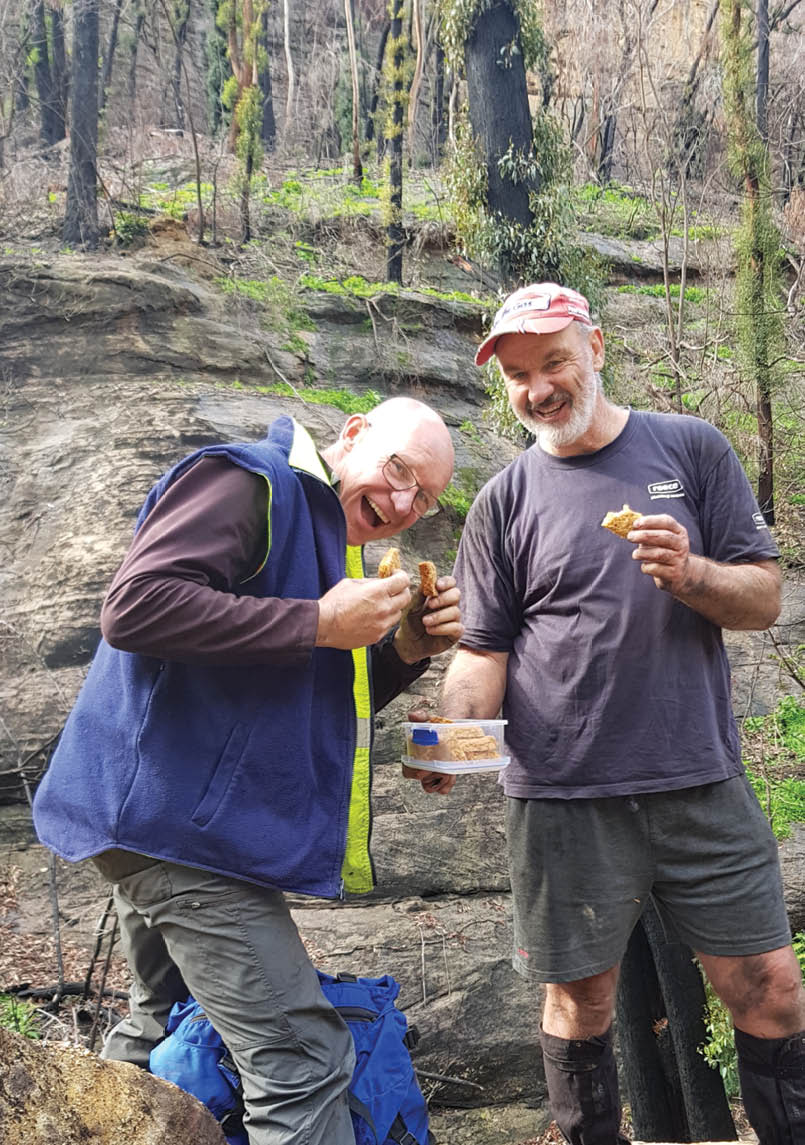

What a Lemon!
Sonya Muhlsimmer



These recipes come from a spark of inspiration from my lemon tree, currently in full bloom as I write. I plan to use as many lemons as I can before the cockatoos get into them. I should hurry up as last year I was too late. I was watching the tree and just waiting till they were good to pick, but then I was about a day late. I only got about 10 lemons that I could use out of about 70 that I picked up from the ground, all half chewed. They were all throughout my yard, gee the birds must have had fun. My yard looked like carnage with all the lemons strewn everywhere. I had also promised a friend of mine some lemons as she wanted to make some lemon jam. So really, all I got from my tree last year was a small jar of around 300 grams of lemon jam. The jam was tasty, but really that is all from my tree. Not much hey. I won’t miss out this year ... So I thought I would try making yummy treats with the lemons from my garden, before the birds get to them first that is.
Ivan and Kent enjoying some slice. Exploring an old tunnel chute near Newnes, Wollemi National Park, NSWAll pictures by Sonya Muhlsimmer
56 | BWA October 2020
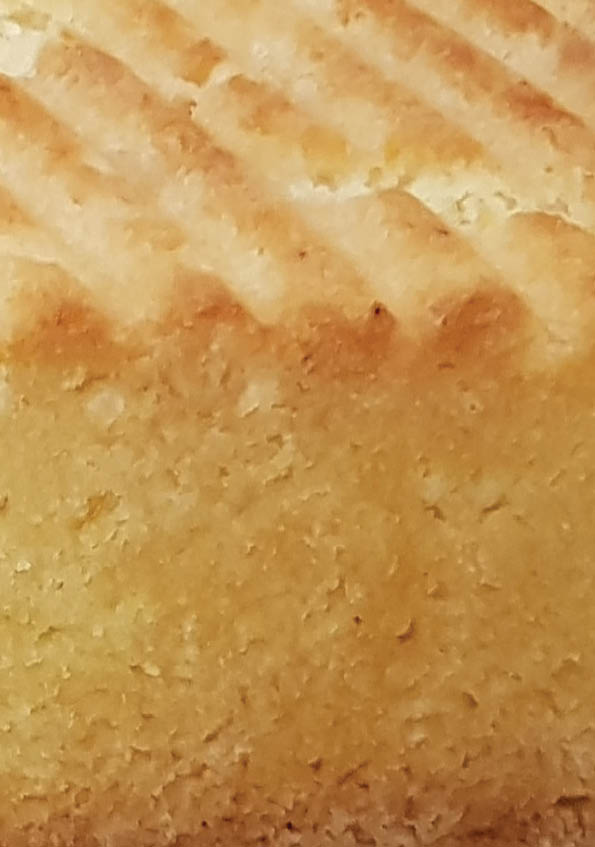


Lemons are packed full of minerals like iron, copper, potassium and calcium and contain flavonoids (which are antioxidants), other antioxidants and Vitamin C, in fact they provide 53 mg of Vitamin C to 100 grams. Although not eaten alone like a normal fruit, lemons are so versatile. They can be used in so many different recipes such as slices, cakes, pies, pasta, rice, noodle and fish dishes, salad dressings. You can add lemon to drinks such as beer – I dread to say the name of the beer at the moment - lemonade, lemon lime and bitters and even add a slice to your tea, oh and the leaves can be used to make tea too, the list goes on. You can use lemons for cleaning your house as the citric acid can cut through some serious grease and clean your chopping boards really well. Before I get too carried away here is a great recipe for your next hike to share with friends. This is pretty easy to make and would make a great snack on the go. I chose a Madeira style cake as it has more flour than a traditional cake, thus it has a firmer texture than a normal cake. Stored safely in a container, the cake would last a few days in your rucksack.
Butter
175 grams
Caster sugar
1 cup
175 grams
Lemons - juice and zest
2 small
Eggs
3 each
Self raising flour
2 cups
250 grams
At home preparationPreheat a fan forced oven to 165 °C. Cream the butter and sugar for about 5 minutes then add the lemon juice and zest, mix through. Add the eggs one at a time with about a third of the flour at each addition with the egg and mix well. Place in a lined loaf tin and bake for about 40 to 50 minutes. Remove from the oven and let cool for about 5 minutes before removing from the tin to a wire rack to cool completely. Cut and serve as is.
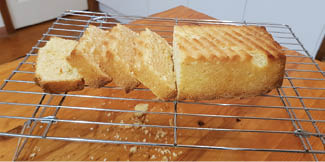
Lemon Madeira Cake
BWA October 2020 | 57
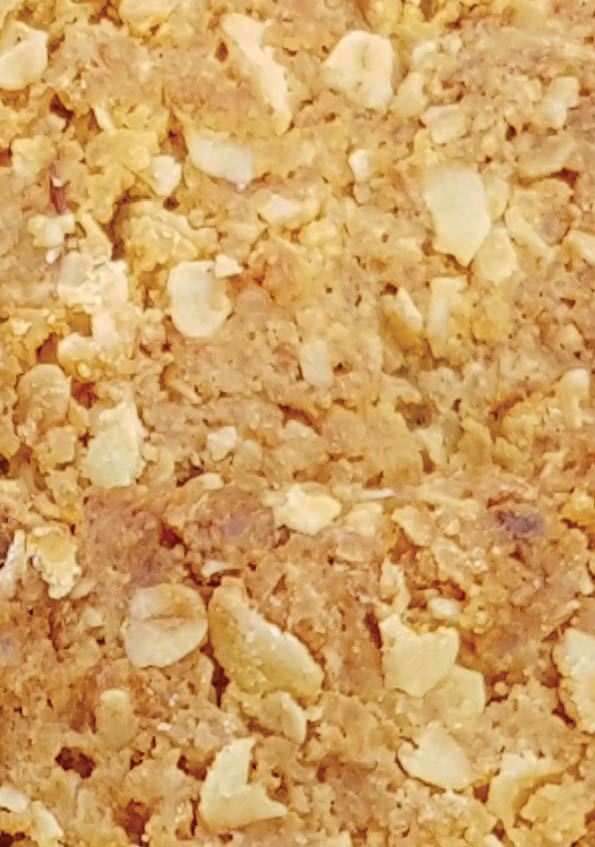


To read more about the author or find delicious recipes check xtremegourmet.com
When you are out on the trails, sharing this slice with your friends, you can surprise them with some new fun facts like the following. The heaviest lemon ever grown was found in Israel and weighed in just over five kilograms, it was in the Guinness Book of Records in 2003. Hooking a lemon up to electrodes can create a battery to run a small watch. Lemons will stay fresh at room temperature for two weeks and in the fridge for up to six weeks. Lemon juice prevents oxidation in foods, which is the browning of food. Flavonoids in the lemons help improve blood flow. So on this note and last but not least, a website I researched stated that Edmund Hillary owed his success on Everest due to lemons. In the book, The ascent of Everest by Sir John Hunt and in the chapter written by Hillary himself, he said he consumed hot water flavoured with lemon crystals and heaps of sugar. I doubt that would have been the only thing that made him succeed, but I do know that at high altitude the body does create more red blood cells to compensate for the lower oxygen level in the atmosphere, thus blood cells carry more oxygen through the body. So, if the lemons help improve blood flow, even more oxygen will be circulated through the body which is what you need in a high-altitude, low-oxygen environment. Makes sense to me but food for thought right, got your slice ready, Everest anyone? Let’s go.
Rolled oats
1 cup
100 grams
Plain Flour
1 cup
125 grams
Raw sugar
½ cup
100 grams
Desiccated coconut
¼ cup
20 grams
Lemon – juice and zest
1 each
Crystallised Ginger
100 grams
Butter
125 grams
Treacle
1 Tbsp
35 grams
Coconut oil
1 Tbsp
40 grams
Bicarb soda
1 Tbsp
6 grams
At home preparationPreheat a fan forced oven to 165 °C. Using baking paper, line a 28 x 18 cm baking tray. In a large bowl combine the oats, flour, sugar, coconut, lemon zest and crystallised ginger and mix together. In a pot add the butter, treacle and coconut oil over a low heat until the mix has melted. Take off the heat and add the bicarb. Stir through and add this to the dry ingredients and mix thoroughly. Pat down on the baking tray and cook for about 30 to 35 minutes. Remove from the oven and let cool for about 5 minutes before removing from the tray to a wire rack to cool completely. Cut into square slices and enjoy on the go.

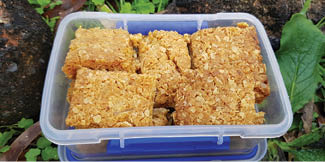
Oat, Lemon and Ginger Slice
58 | BWA October 2020